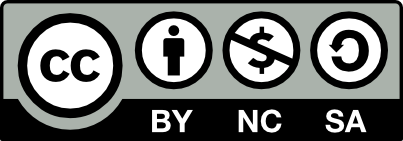Could I be an Entrepreneur?
Lesson Topic:
Comparing charactisitcs of successful entrepreneurs to personal characteristics
Lesson Description:
Could I be an Entrepreneur? Is a lesson for students to identify characterisitcs of an entrepreneur. Then complete self assessments to identify personal characteristics that match those of entrepreneurs.
Learning Goals/Outcomes:
- Identify characteristics of successful entrepreneurs
- Assess personal characteristics
- Compare characteristics of successful enterpreneurs with personal characteristics
Nebraska Standards:
- NE.BMM.HS.3.28.A. NE.BMM.HS.4.19.A. NE.BMM.HS.7.22.A. Analyze personal strengths, skills, and talents necessary to be an entrepreneur.
- NE.BMM.HS.3.28.B. NE.BMM.HS.4.19.B. NE.BMM.HS.7.22.B. Identify responsible behavior, attitude, and leadership ability.
Teacher Planning:
Equipment/Materials/Software Needed:
- Computer & projector for teacher
- Computer/Chromebook with an internet connection
- Word processing software - Microsoft Word, Google Docs
- Student White Boards and dry erase markers (optional)
Time Required for Lesson:
- Option 1: 50 minutes. Then students will need to complete the assignment outside of class as homework.
- Option 2: 20 minutes of presentation and discussion. 60 minutes to complete self assessments and reflection in class. The 60 minutes could be separated across a few days if needed. During the 60 minutes, the teacher walks the classroom to help students draw connections and answer questions.
Diagram/Setup:
NA
Technology Use:
Software:
- Internet browser to locate assessment websites
- Word processing software - Microsoft Word, Google Docs, etc.
Hardware:
- Computer/Chromebook with Internet access
Instructional Plan:
Anticipatory Set/Pre-Activity:
- In Scategories fashion, have students list any characteristics of a successful entrepreneur on a small whiteboard or paper.
- Compare the list the student made individually with a partner to find unique items
- Have the partners share out their unique items to create a class list of characteristics
- Discuss the list of characterstics - acknowledge that every entrepreneur does not have all of these characteristics. This also leads to a discussion of building a team or network of people to compliment the entrepreneur's own skills.
Benefits/Explanation/Real-World Connection:
- Identify characteristics of local or famous entrepreneurs to create a connection
Activities (i.e. instructions, warm-up, lesson, cool-down):
- Take the class list of characteristics and compare it to a reliable source. There are several websites and resources that provide lists of common characteristics of entreprenuers. I use our textbook and a current online list to provide them examples from outside our classroom.
- Explain the assignment (attached below) and help the students get started. I usually start with the Entrepreneurial Aptitude Test from GoSmallBiz.com because it is specific to entrepreneurship. The questions are created for an adult to answer. For example it asks about marital status and amount money to start a business. Therefore I tell the students to pick a time in their life and keep that mindset as they answer the questions. For example if they choose the current time and them as a high school student then it's okay, but expect that some results will show deficiences or inexperiences in areas. They could choose themselves as a college graduate or whatever moment they choose, but keep that mindset while answering all the questions. *There are 70 questions on GoSmallBiz.com assessment, so ensure you have enough class time for them to complete it.
- I have taken the Entrepreneurial Aptitude Test from GoSmallBiz.com. I show them my results before I let them go and take the assessment on their own. I've also waited until they've finished. They all finish at different times, so you end up explaining the results several times and may need to provide other guidance depending on the group.
Closure:
When students complete an assessment, have a few of them share "aha" moments. What stood out to them from their results? What do the agree with most/least about the results? How will they use these indicators to move forward?
Assessment :
The completion of the assignment is the assessment. They need to write an appropriate reflection. Something that shows they actually read their results and consider the indicators that were presented.
Supplemental Information:
Modifications:
- I've continued the Scategories format to develop a list of successful team members, since entrepreneurs really develop a team or network of people to reach their goals.
- Whiteboard for lists - we have small (9" x 12") whiteboards for individual or small group use. Sometimes students enjoy writing on the whiteboards more than paper.
- Prizes - Using a Scategories style to create the list, sometimes I have given small prizes to the group that has the most unique items.
Safety Precautions:
NA
Comments (adaptations for various grades/ages, teaching styles, etc.)
- There are several self assessments available on the internet. I try to focus on ones that connect directly to entrepreneurship. The assignment lists the ones I've used. I always take them before I put them on my list. Some do require the individual to register and I have my students use their school email address. Some will also offer "complete" reports/profiles for a fee, but the sample results are sufficient for this assignment. There is no need for them to pay anything. Our school also provides some options with the college and career readiness program. We use Nebraska Career Connections and Naviance that both haves strengths assessments built in to their systems.
- I also explain that the results are only indicators based on the way the student answers the questions. Some students get upset and sometimes defensive if the results don't come out the way they think they should. Free results are nice, but that also means that the assessments haven't been through the review and research process like the ones that have a fee. The student is the only one that really knows whethere he/she has what it takes to be an entrepreneur and if he/she is willing to put the time and energy into being one.
- For students that finish before others, they can take additional assessments from the list or even locate their own assessment.
Resources:

Creative Commons. Attribution. Non-Commercial. ShareAlike